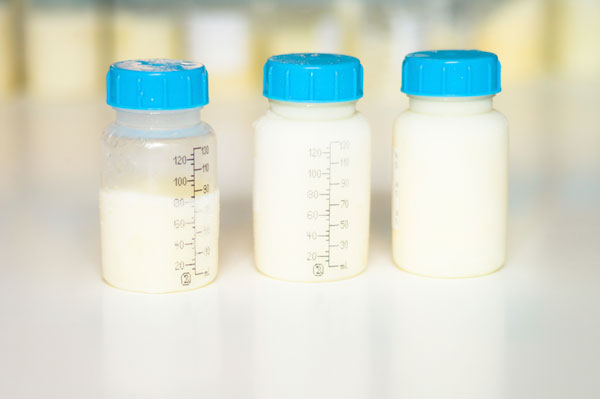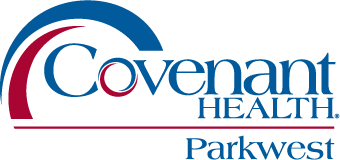How to Express Milk by Hand or Pump
Manual expression of breast milk requires practice.


Expressing Milk by Hand or Pump
There are several reasons for expressing milk by hand or pump, including relief from engorgement or to store and use while you are at work or away from your baby.
Manual Expression of Milk
Manual expression of breast milk requires practice. First, massage your breast for 3-4 minutes. Gently support your breast with your thumb and first two fingers opposite each other approximately 1 – 2 inches away from the nipple. Press back toward your chest wall ➙ Compress fingers and thumb together ➙ Relax ➙ Repeat. Rotate your thumb and fingers around your breast.
Using Breast Pumps to Express Milk
Breast pumps are another method of expressing breast milk and vary widely in quality and design. Ask your lactation consultant for a list of available breast pumps for your unique situation.
Manual breast pump systems work well and can be obtained at some retail stores. These pumps are designed for occasional use and are not recommended for increasing a low milk supply or for use if mom and baby are separated for long periods of time (i.e., baby in hospital or mom working).
Double electric pumps are a good option for moms who are working full or part time or going to school. Double pumping is quick and increases prolactin hormone levels which increase milk supply.
Hospital-grade electric breast pumps are good for long-term usage or to increase milk supply (i.e., if your baby is in the intensive care nursery or you are sick). Hospital-grade electric pumps are a good option and can be rented by the week or month.
Battery-only operated breast pumps usually yield poor results.
Milk Collection and Storage
Breast milk collection and storage guidelines may vary for a healthy, full-term baby versus a sick or hospitalized baby. The following recommendations are for normal, healthy, full-term infants.
Wash your hands with warm soapy water for at least 15 seconds. Wash storage containers in hot soapy water, rinse well, and boil for 10 minutes or wash in a dishwasher with a dryer cycle on to sterilize. Recommended storage containers should be clean and sealed. You may use glass or Bisphenol-A (BPA) free bottles or food containers.
These BPA free containers usually have the recycling code number five. If choosing milk storage bags, be sure they are freezer compatible and have an airtight seal.
Find a private, comfortable place.
Apply warm compresses to breasts for 1-3 minutes. Gently massage your breasts to initiate milk flow. Relax and think about your baby.
If hand expressing, use a container with a wide mouth or opening like a coffee mug or funnel.
Pump on a comfortable “suction” setting. Do not pump at a painful setting even if more milk is obtained. If using an electric pump with cycling controls, turn cycles on high for the first 2-3 minutes to mimic the baby’s quick stimulation phase, then turn cycles down midway and pump for 5 minutes for letdown phase. Then repeat for a total of 10-15 minutes of pumping.
When pumping, pump directly into the storage container when possible. Store breast milk in single servings (2-4 ounces).
Mixing Breastmilk
- When pumping both breasts at the same time, you may combine the two bottles of milk when finished.
- You may combine small amounts of chilled breastmilk to make a serving.
- If adding to frozen milk, first refrigerate all freshly expressed milk until cold; then add to the frozen milk. The newer milk volume should be less than the frozen volume to avoid thawing.
- Date the container. Use older milk first.
Defrosting and Heating Breast Milk
When heating or thawing breast milk, NEVER use a microwave. Microwaves can cause uneven heating and may destroy the protein in breast milk. Thaw frozen breast milk in the refrigerator overnight or in a pan of warm water. Use thawed milk within 24 hours; warm milk only to body temperature. Warmed milk must be used within 4 hours or discarded.
Breastmilk is not homogenized and will usually separate. Gently swirl the container to mix the cream back in. The color and odor of breastmilk may vary depending on the mother’s diet and type of storage container.
Any milk left in the feeding container after a feeding should be discarded and not re-used.
Expressed Breast Milk Storage Guidelines for Healthy Full-Term Newborns
| Breast Milk Type | Room Temperature 66–72°F (19–22°C) | Room Temperature 72–79°F (22–26°C) | Refrigerator 39°F (4°C) | Freezer 0°F (-18°C) | Deep Freezer -20°F |
Freshly Expressed Breast Milk |
≤ 6 hours |
≤ 4 hours |
≤ 5 days |
3 months |
up to 12 months |
Frozen – thawed in refrigerator (not warmed) |
≤ 4 hours |
≤ 4 hours |
≤ 24 hours |
Never refreeze |
Never refreeze |
Thawed and brought to room temperature |
For completion of feeding – up to an hour at room temp, then discard |
For completion of feeding – up to an hour at room temp, then discard |
≤ 4 hours |
Never refreeze |
Never refreeze |
Infant has started feeding |
For completion of feeding, then refrigerate ≤ 4 hours |
For completion of feeding, then refrigerate ≤ 4 hours |
≤ 4 hours |
Never refreeze |
Never refreeze |
- Storage guidelines may vary for premature or sick babies.
- When thawing frozen milk, label as thawed when no ice crystals are present.
- Store breast milk in the coldest part of the refrigerator or freezer (usually in the center back and never in the door).
- Research supports that your milk will not spoil using these guidelines. However, please note that the longer milk is stored the more vitamins and nutritional value can be lost. Baby may need vitamin supplementation if not receiving any fresh breastmilk or not doing any direct breastfeeding.
Breastfeeding Resources from Parkwest Medical Center
Parkwest Medical Center cares deeply for the people of Eastern Tennessee we’re honored to serve.
That’s why we provide you with the following helpful resources, to offer you the information you need about breastfeeding.
- Breastfeeding Guidebook
- Breastfeeding Positions
- Successful & Comfortable Breastfeeding
- Common Breastfeeding Concerns

